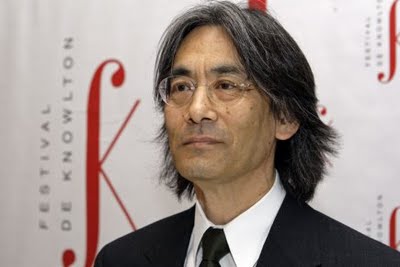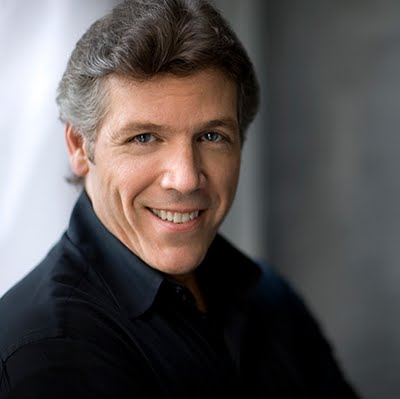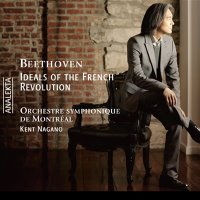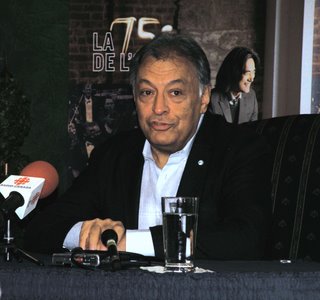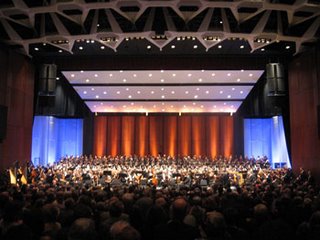Berlioz and Nagano: Beauty & Frustration at Place des Arts

The first Ozawa rendition I heard was in Salzburg with the Orchestre de Paris and the second at Tanglewood with the Boston Symphony. On both occasions Ozawa effortlessly coordinated the four required brass groups situated around the hall. He not only achieved monumental and thrilling climaxes, but also captured the ethereal quality of the work which is its dominant characteristic.
Since Kent Nagano was at one time Ozawa’s assistant in Boston, I expected great things from Nagano’s own performance of the Requiem this week at Place des Arts in Montreal. I was disappointed, but I don’t think the fault was entirely, or even primarily, Nagano’s.
I have come to believe that music reviewers should begin their reports by stating the location of their seats. The same concert can sound very different depending on seat location. This is especially true of a work like the Berlioz Requiem. Berlioz’ concept was for a large chorus and orchestra to be positioned in their usual places on stage, with four brass groups stationed around the hall. In Place des Arts, for this performance, there were brass ensembles placed on either side of the main floor (Parterre). The other two groups were placed at the first balcony level (Corbeille) at the very front of the two aisles. Anyone sitting on the ground floor about half way back probably got a very good sense of what Berlioz had in mind.
In the Dies Irae movement – specifically, the section called Tuba mirum ("Wondrous sound the trumpet flingeth") – the brass groups let loose a barrage of fanfares suggesting the majesty and terror of the day of judgement. Berlioz’ music is cleverly conceived to be at once powerful, awe-inspiring, and conflicted. If one is fortunate enough to have a seat more or less equidistant from each of the musical groups, the effect makes your hair stand on end. Unfortunately, my seat was in one of the worst locations for an ideal appreciation of these wondrous happenings - just a few feet away from one of the Corbeille brass groups. I heard this group just fine, but not as part of the whole, and so missed the intended effect. For me, and quite possibly for many of the people in my section, this ‘isolated’ effect was simply annoying and unpleasant!
But after all, these quadraphonic effects are really a small, if extraordinary, part of the Berlioz Requiem. Elsewhere in the piece, Nagano achieved an exquisite lyricism. The choir, prepared by guest chorus master Michael Zaugg, gave him nearly everything he wanted. In later performances the sopranos will probably do better with their first entry than they did on opening night.
The members of the Orchestre symphonique de Montréal (OSM) played impeccably, with flutist Timothy Hutchins performing miracles of breath control. Those famous flute/trombone chords are always treacherous in terms of intonation but the OSM musicians nailed most of them spot-on.
I have already blamed my seat location for some problems with the Dies Irae, but other weaknesses have to be laid at the feet of the hall’s dreadful acoustics and/or Kent Nagano’s direction.
Berlioz’ score for the Requiem calls for eight sets of timpani. There were only four in this performance. Nonetheless, even four timpanists can produce a bigger sound than I heard in this performance. The effect here was one of four grown men beating on tubs of marshmallows. Totally ineffectual. As for the soft cymbal strokes – a magical touch in this work and one which Wagner borrowed in Lohengrin – Nagano apparently added a Dada-esque mime episode to the Requiem. One percussionist was seen to rub two large cymbals together - but not a sound was heard. In the Salzburg Ozawa performance mentioned earlier, each of the eight timpanists executed the delicate swish with a small pair of cymbals and the sound was both exotic and otherworldly.
With a new hall for the OSM already under construction, complaints about the old one are admittedly a waste of breath. Best to talk about what Place des Arts acoustics do provide. For soft singing and playing, they are acceptable and much of the Requiem is comprised of quiet music. A case in point was the Sanctus, played and sung as beautifully as one is likely ever to hear it. Tenor Michael Schade was wisely brought down to the front of the stage for his solo. Had he been stuck back in the chorus, he might have burst a blood vessel trying to make himself heard. Nagano’s tempo was expansive, but Schade filled out the phrases with beautiful and meaningful sound.
The performance apart, I was quite taken with Dujka Smoje’s programme notes. I hope members of the audience took time to read them. They are somewhat academic, but enormously thought-provoking. I don’t recall ever hearing Berlioz’ Grande Messe des Morts described as “an atheist’s mass,” but Smoje has a point. He argues that the Requiems of Verdi and Brahms could be similarly described, and he might have added Britten (War Requiem).
So why did all these great composers use traditional liturgical texts if they didn’t believe a word of them? Smoje argues that “the religious frame is only a pretext for the reconciliation with the finitude of man.” It is not necessary to be a Christian to reflect on the mysteries of life and death, good and evil, and the human condition. Believers of all faiths - and philosophers too - have been preoccupied with these matters for centuries. The true believers more often embrace firm and comforting conclusions. Philosophers and composers like Berlioz, Brahms, Verdi, Britten and Mahler go on wrestling with the questions. The words of the last movement of the Berlioz Requiem – the Agnus Dei – speak of paradise and eternal peace, but the music is not quite so reassuring.
Paul E. Robinson is the author of Herbert von Karajan: the Maestro as Superstar, and Sir Georg Solti: His Life and Music, both available at Amazon.com.
Labels: Berlioz Requiem, Kent Nagano, Michael Schade, Michael Zaugg, Orchestre symphonique de Montreal, OSM, Place des Arts
